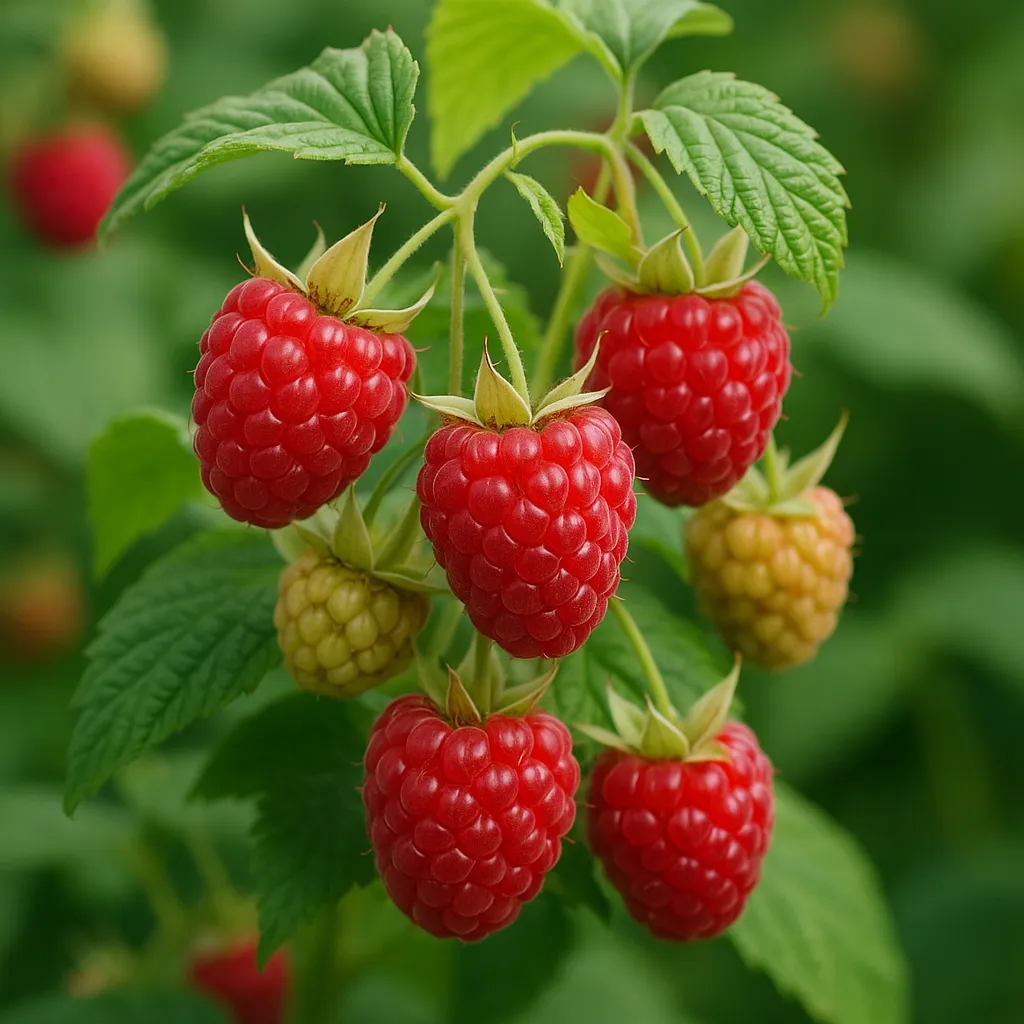Best Raspberry Varieties for Beginners: A Complete Guide to Easy and Delicious Harvests
Discover the best raspberry varieties for beginners, including Heritage, Autumn Bliss, and Polka. Learn how to grow, care for, and harvest delicious raspberries easily.

Raspberries are one of the most rewarding fruits you can grow in your garden. Their sweet flavor, vibrant color, and versatility make them a favorite among gardeners and food lovers alike. For beginners, choosing the right variety is the first and most crucial step toward a successful harvest. With the right raspberry plants, even novice gardeners can enjoy abundant yields and minimal maintenance.
Why Choosing the Right Raspberry Variety Matters
Different raspberry varieties offer unique benefits in terms of flavor, hardiness, and fruiting season. Some are more resistant to pests and diseases, while others thrive in particular climates. Selecting a beginner-friendly variety helps ensure consistent growth, fewer problems, and a longer harvest season. It also allows you to enjoy fresh berries for months on end, with minimal effort.
Understanding Raspberry Types
Before diving into specific varieties, it’s important to understand the two main types of raspberries:
- Summer-bearing raspberries: These produce one large crop per year, usually in early to mid-summer. They’re ideal for gardeners who want a concentrated harvest period.
- Ever-bearing (or fall-bearing) raspberries: These plants produce two crops per year—one in midsummer and another in the fall. They are perfect for beginners who want extended harvests and a steady supply of berries.
Top Raspberry Varieties for Beginners
1. Heritage
Heritage is one of the most popular and beginner-friendly raspberry varieties. It’s an ever-bearing type, producing delicious, firm berries from mid-summer to the first frost. This variety is hardy, disease-resistant, and easy to maintain, making it a reliable choice for new growers. Heritage raspberries are known for their classic raspberry flavor—sweet with a slight tartness that makes them perfect for fresh eating or preserves.
2. Autumn Bliss
Autumn Bliss is a highly productive fall-bearing raspberry, ideal for beginners who want an extended harvest. It offers large, firm fruits that ripen from late summer through autumn. This variety is particularly resistant to root rot and viral infections, making it suitable for less-than-perfect soil conditions. Autumn Bliss thrives in cooler climates and can tolerate light frosts.
3. Joan J
Joan J is a thornless raspberry variety—an excellent option for those who prefer hassle-free picking. It produces large, sweet, and firm berries from mid-summer until late fall. The lack of thorns makes maintenance and harvesting simple, while the variety’s resilience against common diseases ensures reliable yields year after year.
4. Polka
Polka is a modern, fall-bearing variety bred for both quality and simplicity. It’s known for its early ripening, high yields, and intense raspberry flavor. The berries are bright red, aromatic, and perfect for freezing or making jam. Polka is also highly resistant to root diseases, which means it performs well in a variety of soil types. Its predictable growth pattern and reliability make it one of the best choices for novice gardeners.
5. Tulameen
Tulameen is a summer-bearing variety loved for its exceptional flavor and large, juicy berries. Although it requires slightly more care than ever-bearing types, it rewards growers with some of the best-tasting raspberries available. Tulameen thrives in mild climates and performs well in containers or raised beds. With proper pruning, it can yield abundant crops for many years.
6. Caroline
Caroline is a vigorous, ever-bearing variety that produces large, deep-red berries with a rich, aromatic flavor. It’s known for its productivity and adaptability to various climates. Caroline raspberries are also resistant to root rot and several common fungal diseases. For beginners who want both taste and reliability, Caroline is a top contender.
Tips for Growing Raspberries Successfully
Even the easiest varieties benefit from proper care and maintenance. Here are a few essential tips for success:
- Choose the right location: Raspberries prefer full sun and well-drained soil. Avoid waterlogged areas, as excess moisture can lead to root diseases.
- Provide support: Use trellises or stakes to keep canes upright and improve air circulation, reducing the risk of fungal issues.
- Prune regularly: Remove old or weak canes after fruiting to encourage new growth. Pruning also prevents overcrowding and promotes larger berries.
- Water consistently: Raspberries need regular watering, especially during dry periods, but avoid overwatering.
- Mulch generously: A layer of mulch helps retain moisture, suppress weeds, and regulate soil temperature.
Common Mistakes Beginners Should Avoid
Starting your raspberry patch is simple, but beginners often make a few avoidable mistakes:
- Planting too deep: The crown should sit just above the soil surface. Deep planting can stunt growth and cause rot.
- Neglecting pruning: Without pruning, canes become tangled, reducing yield and increasing disease risk.
- Skipping pest checks: While raspberries are hardy, they can still be affected by aphids, beetles, and mites. Regular inspection helps prevent infestations.
- Overfertilizing: Excess fertilizer can cause excessive leaf growth at the expense of fruit production.
Conclusion: The Joy of Growing Your Own Raspberries
Growing raspberries can be one of the most satisfying experiences for any beginner gardener. With the right varieties—such as Heritage, Autumn Bliss, or Joan J—you can enjoy fresh, flavorful berries from summer through fall. These resilient plants require minimal care and deliver impressive yields year after year. By following simple maintenance tips and avoiding common pitfalls, even first-time growers can create a thriving raspberry patch that will reward them with sweet harvests for seasons to come.


